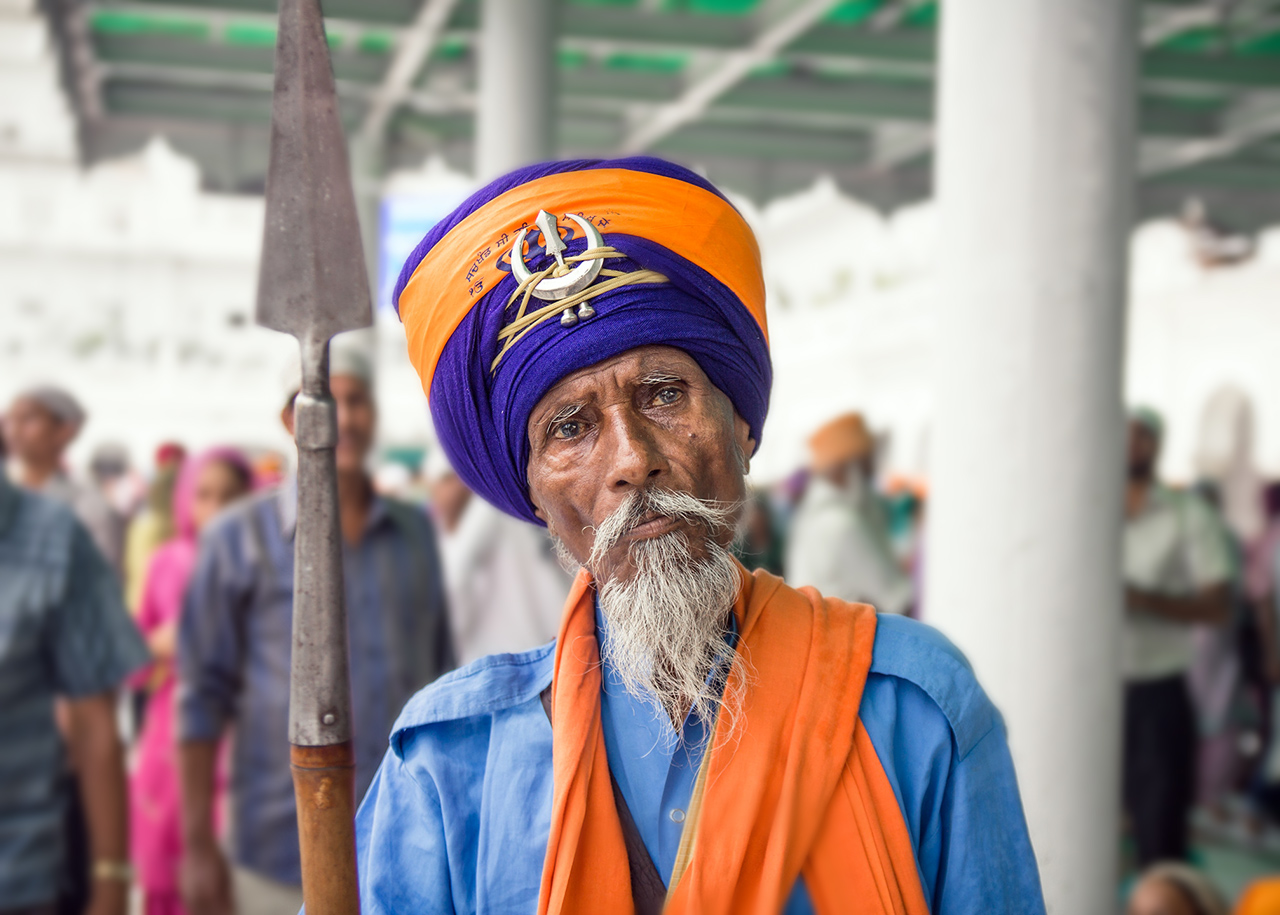
Punjab has one of the most ancient and diversified cultures on the globe. ‘Punj’ means five, and ‘ab’ means water, hence it’s known as the Land of Five Rivers. The five rivers that flow through this country are the Beas, Sutlej, Chenab, Ravi, and Jhelum, which divide it into three major parts called Doaba, Majha, and Malwa. Punjabi poetry, philosophy, spirituality, education, artwork, music, food, science, technology, military warfare, architecture, traditions, values, and history all reflect this diversity and distinctiveness. It’s difficult to overlook the compassion and zeal displayed in the Punjabi (Punjabis) way of life.
Languages of Punjab
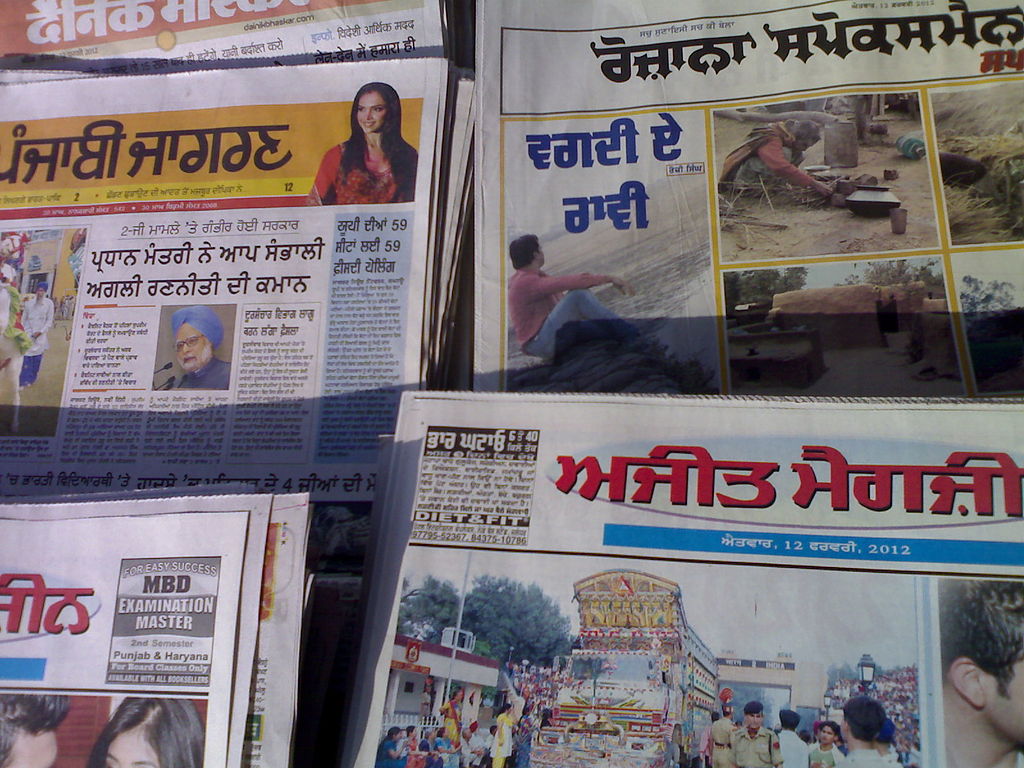
Punjab is a vast expanse of natural beauty and majesty. Its language is a valuable asset that is gaining widespread popularity across the country. Punjabi is the state’s official language, and it has a lot of similarities to Hindi. It is the world’s ninth most widely spoken language. The residents of West Punjab, on one hand, speak more Hindi than Punjabi, whilst the situation is reversed in East Punjab.
Gurmukhi, which is based on Devanagari, is the script used in Punjabi. It’s a fusion as well as a tonal language. It is a fusion language because it is formed by the merger of many morphemes (the smallest linguistic unit with semantic meaning). It has a tonal quality due to the fact that the tones identify the words. Punjabi borrows heavily from various languages such as Hindi, Persian, Urdu, and English in modern times. Punjabi has recently travelled to other parts of the world, where it has been adapted to fit the local lexicon.
Surprisingly, the Punjabi language has numerous dialects that have developed according to the place where the language is spoken. Bhattian, Malwai, Pahari, Doabi, Kangri, Hindko, Pothowari, Shahpuri, Rachnavi, Majhi, Thali, Thalochri, Chakwali, and Ghebi are some of the most important dialects. Hindi is a widely spoken and understood language in the state, with practically everyone speaking and understanding it fluently. Even English is a language that many people are familiar with. If you want to learn Punjabi, try Ling-app a great platform to learn the language with ease.
Religion in Punjab
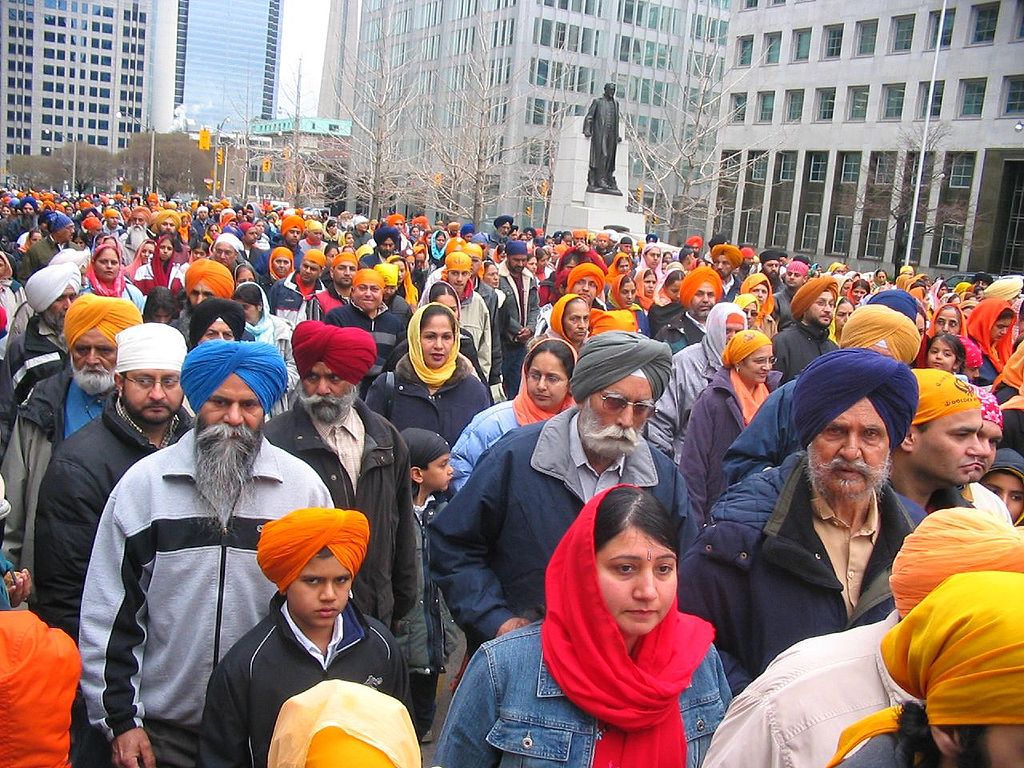
In India, Sikhism is the predominant religion in Punjab. It is the world’s fifth largest religion, founded by Guru Nanak Dev and other nine Gurus. Sikhism’s core belief is in “Waheguru,” which means “Universal God.” The religion believes that salvation can be attained by meditating on the Almighty in a disciplined and intimate manner. Sikhs revere the ten Gurus as well as the Holy Scripture Guru Granth Sahib, which is revered as the eleventh and final Guru. Monotheism and a non-anthropomorphic understanding of God are central to Sikhism. Volunteering and community service are seen as essential in a person’s life. The primary rule for leading one’s life is hard effort and sincere dedication. Gurdwaras, which are the Sikhs’ primary place of worship, exist in Punjab. The Golden Temple in Amritsar is a world-famous pilgrimage site that draws people from all over the world.
Though not as frequently practiced as Sikhism, Hinduism is an important religion in Punjab. In fact, it is the state’s second most widely practiced religion. Hindus live a liberal lifestyle, and the majority of them attend gurdwaras to worship. Islam is another prominent religion in Punjab, however it is practiced by just a small percentage of the population. The majority of Muslims in Punjab fled to Pakistan after the split in 1947. Despite the small population of Muslims in the state, there are a large number of mosques. Other minority religions in the state include Christianity, Jainism, and Buddhism.
Traditional Dress of Punjab
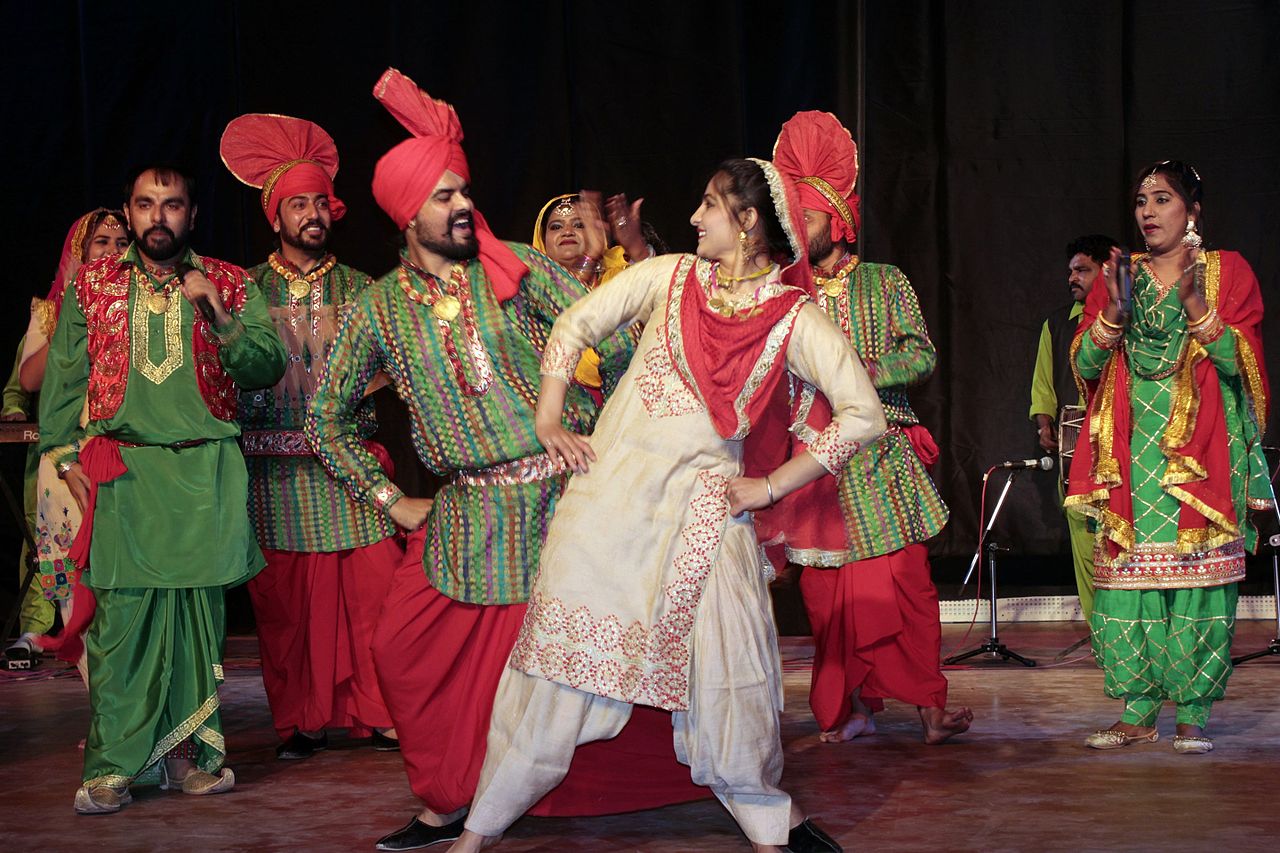
In Punjab, women’s apparel is known as churidar kurta. The traditional attire is worn by women. Although it is a Punjabi traditional attire, it is currently worn by most young ladies across India with colourful Dupattas. The top portion is a kameez (a sort of loose shirt), while the bottom component is a salwar (a type of pant). In most cases, the dupatta is the same colour as the Salwar Kameez. Beautiful shawls created with Phulkari embroidery can also be seen on women.
Suggested Read – Traditional Dresses of Punjab, Celebrating the Colors of Vibrancy
In Punjab, the men’s traditional attire is the Kurta Pajama. The Kurta is a long-sleeved shirt with a straight cut. The pajamas are likewise loose and must be fastened around the waist. Few guys choose to wear a Kurta with a Tehmat or Lungi. Pagri or Pugg (Turban) is a religious turban worn by Sikhs in Punjab. Turbans are worn by men in a variety of hues depending on their attire. Jooti is the favored footwear, which has been worn by both men and women for many years.
Architecture of Punjab
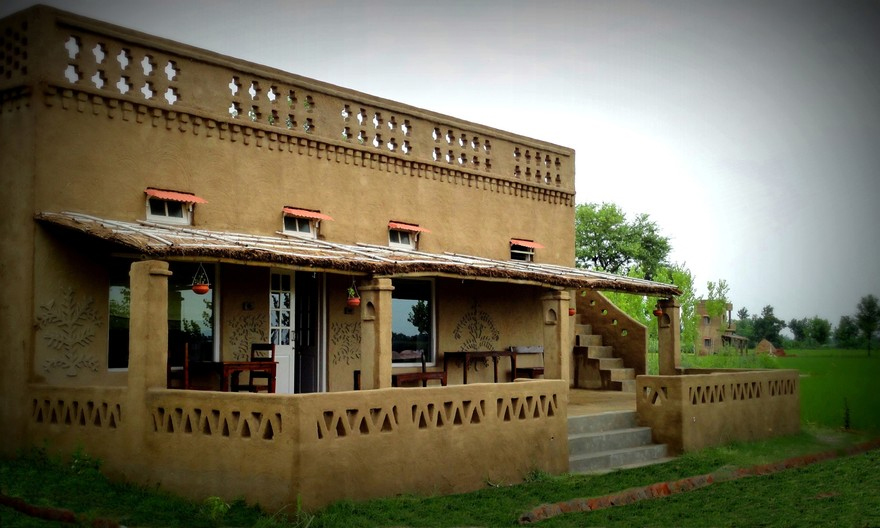
The Buddhist and Islamic forms of architecture had a huge influence on Punjab. Despite the fact that Sikhism is the most popular religion in Punjab, it does not have its own architectural style. It is a mix of Sufism in Islam and Hinduism. The Gurudwara is the Sikhs’ primary site of worship. The Mughal palace style of construction has been adopted by Sikhism’s followers. Even after independence, Punjab’s architecture has continued to grow. The Maurya Empire is responsible for some of Punjab’s earliest architectural examples. Following the Mughal invasion, Islamic architecture became a part of Punjab.
The Sikhs’ primary place of devotion is Amritsar’s, Golden Temple. Amritsar became the most important city for the Sikhs in the latter half of the 16th century. The Golden Temple was built in 1764, and when Ranjit Singh created the Sikh state in 1802, he plated the ceiling with gold, and what was previously known as the Hari Mandir became known as the Golden Temple. The primary structure is modest and sits in the middle of a tank, giving the impression that it is floating on water. The temple, its marble precincts, and the water in the tank all look to be pure, unique, and amazing. The primary structure is constructed in the late Mughal style. The open terrace-style Mughal garden inspired the Yadavindra garden in Pinjore. The garden’s central water channel is lined with chadars and fountains and runs through seven open terraces and pavilions.
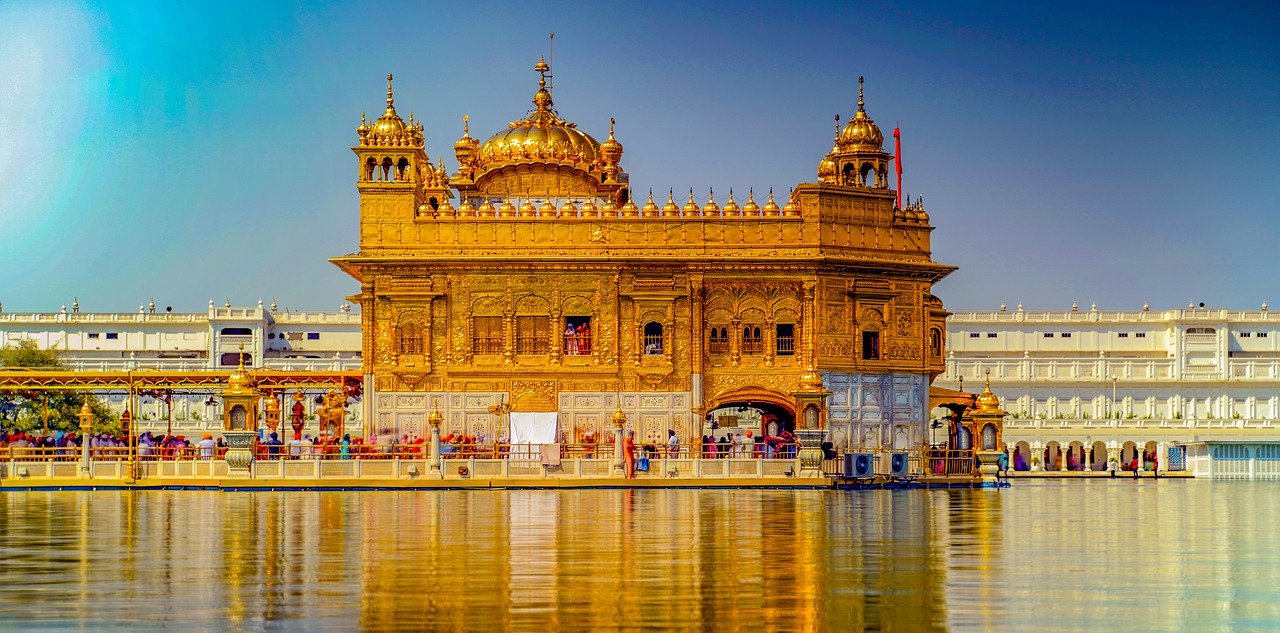
Chandigarh, the state capital, is a fine example of twentieth-century architecture. The city is split into 47 sectors, with the capital complex and civic centre serving as the focal point. It is an excellent ‘garden city’ and a bible for architects because of its ordered design, broad roadways, and well-planned facilities with a modernist lean. Chandigarh has become a symbol of youth, and its residents are proud of the city’s status as a cutting-edge metropolis. Le Corbusier, a French architect and planner, was responsible for Chandigarh’s urban development. Chandigarh is unlike any other city in the world. Chandigarh’s terrace garden is a popular tourist destination. The large sun-screen and three-dimensional look, as well as the interior spaces, create an appropriately spectacular image while remaining true to traditional Indian architecture.
Handicrafts of Punjab
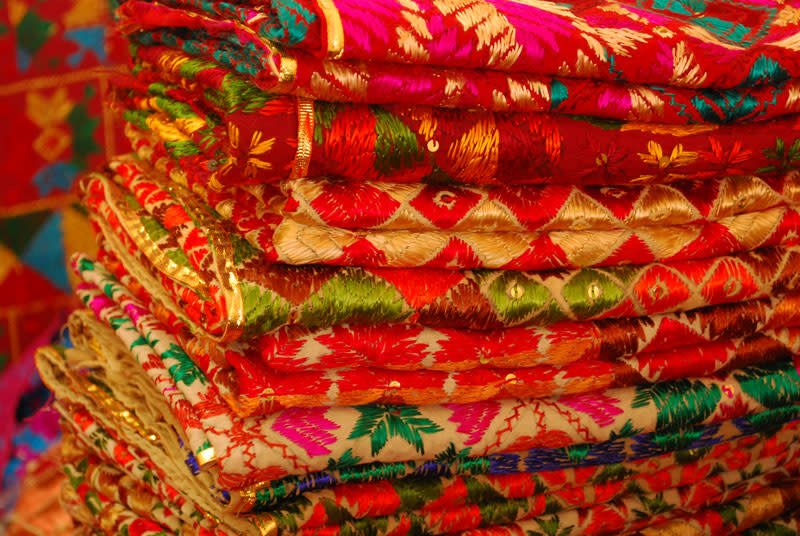
Phulkari, as well as Pidhis, Jootis, Durries, and Parandis, are part of Punjab’s rich handicraft legacy. Phulkari, however, is the most well-known of them all. Many of the crafts are used as household items or ornamental objects in homes, and they reflect the state’s vibrant identity. Mud Works are also an indigenous Punjabi tradition. Women are primarily responsible for weaving durries, and they begin learning the craft as early as childhood. Durries are available in a variety of sizes and patterns here. In addition, the state produces a diverse range of trays, mirror frames, dressing tables, easy chairs, sofa sets, dining tables, and chairs, among other items. Another well-known Punjabi art is the gorgeous Punjabi dolls dressed in elegant gowns. The Thatheras of Jandiala Guru, who work in the city of Amritsar in the Punjab province of India, are known for their brass and copper workmanship, which is recognised on the UNESCO List of Intangible Cultural Heritage.
Festivals of Punjab
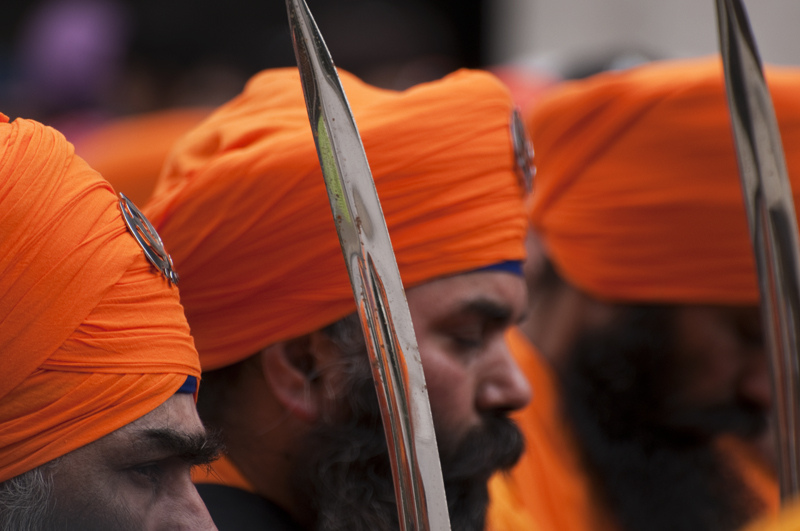
Punjab, like the rest of India, celebrates a variety of festivals throughout the year. Each of these festivals is related with one or more religious tales. Punjabi folks believe in going all out for every festive event. Traditional music and folklore create the ideal environment for the celebration, allowing guests to immerse themselves in the infectious spirit of this incredibly intriguing state.
In Punjab, Baisakhi signifies the start of the “New Year ” . It is commemorated to recognise the hard labor of farmers by commemorating the ripening of the winter (rabi) harvest. Every year on the 13th of April, it commemorates a time of celebration and joy for the people of Punjab.
Punjab’s winter harvest festival, Lohri, is widely observed across the state. It is a fertility celebration that is linked to the worship of the God of Fire (Lord Agni). Lohri, according to the Hindu calendar, occurs on the 13th of January each year, when the earth is closest to the sun.
The name Hola Mohalla comes from the Punjabi word “Mohalla,” which refers to an organised parade in the style of an army column, complete with battle drums and standard-bearers. This event is held in grand style throughout Punjab, particularly at Muktsar and Anandpur Sahib.
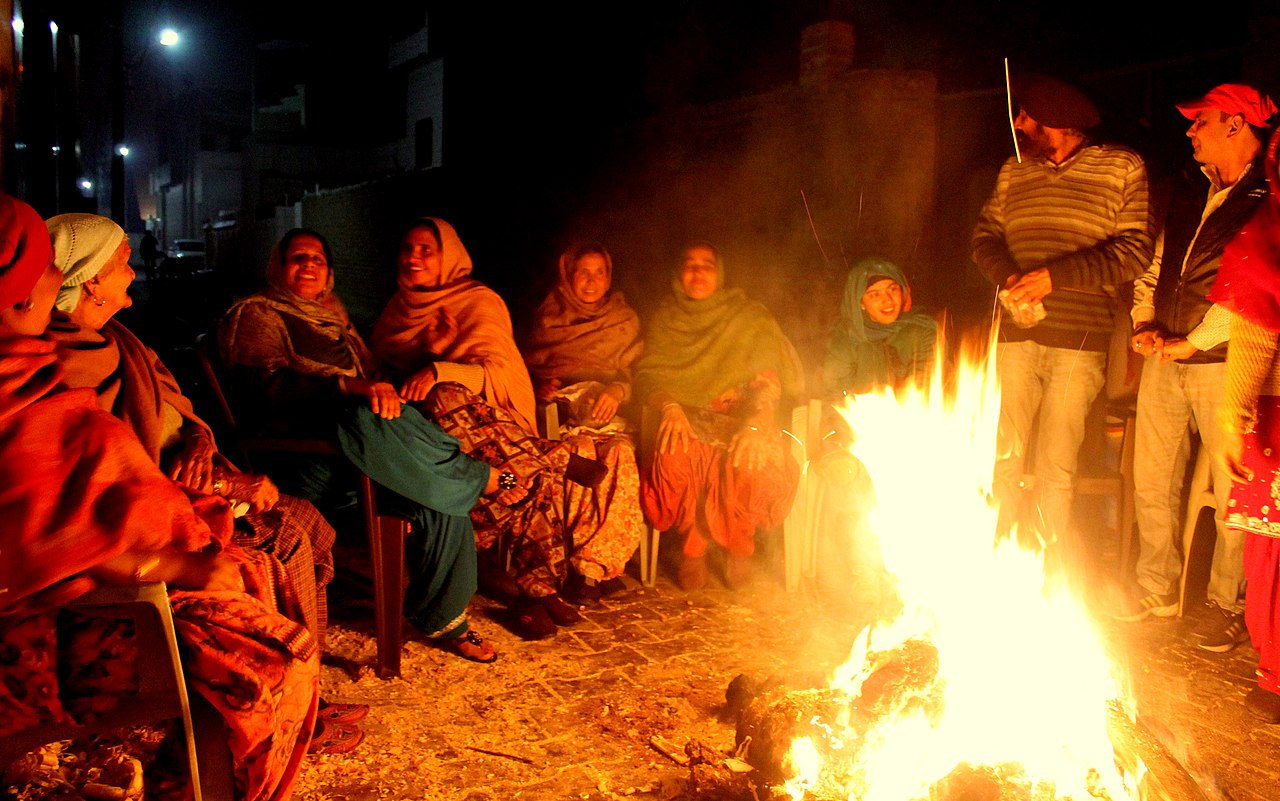
Punjab is a theistic and devotional land. Gurus of the Sikh faith are honored throughout the state. Punjabis observe Gurpurab every year solely for the honor and respect of their gurus. Gurpurabs are intended to commemorate the Sikh Gurus’ birthdays or martyrdoms. In Punjab, however, there are a lot of gurpurabs.
Bhai dooj is observed on the second day after Diwali in the month of Kartik (October-November). This celebration also honours a brother’s and sister’s strong bond. To protect her brother from evil, his sister places a ‘tikka’ (mark) of saffron and rice grains on his forehead. There are hymns and prayers for a long life for my brother. As a show of his affection, the brother gives her gifts or money.
Teeyan is a women’s dance festival held in the month of Sawan. This festival features some of the top gidha performances. The celebration runs from the third lunar day of the month through the full moon, with a grand function on the last day.
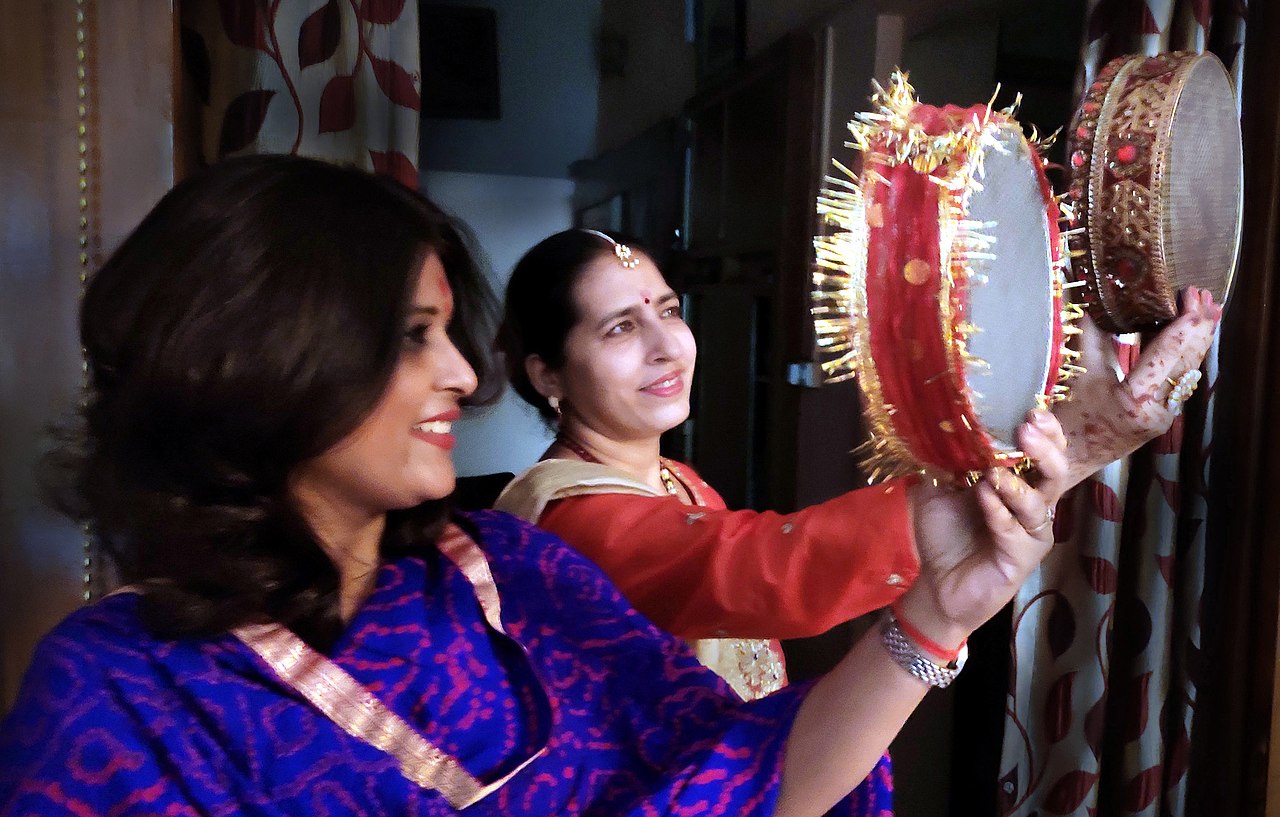
Karwa Chauth is a fast by women that takes place in the months of October and November. Women participate in the celebration to pray for their husband’s long life. On this day, the Moon God is prayed to.
Dussehra is widely observed throughout Punjab, as it is in the rest of India. It commemorates Lord Rama’s victory over Ravana, signifying the eternal triumph of Good over Evil.
Diwali is observed throughout Punjab in the months of October and November, with the exact date dictated by the lunar calendar. It is commemorated to mark Lord Rama’s return to Ayodhya after a fourteen-year exile. Every home in Punjab is illuminated with candles or diyas on this day.
Dance and Music of Punjab
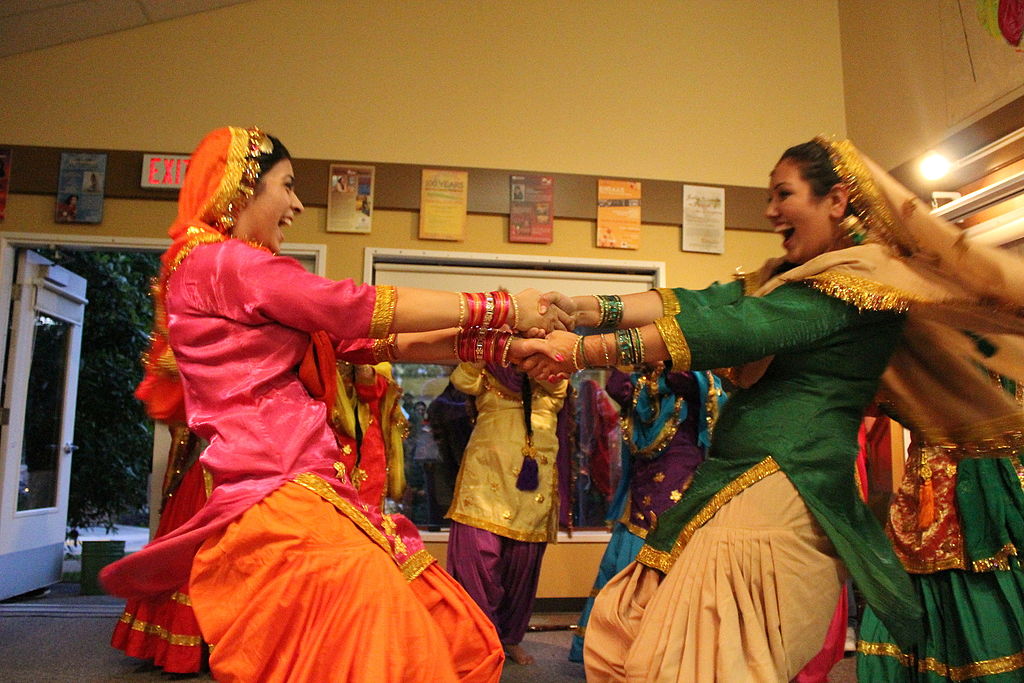
Punjab is regarded for having one of India’s most diverse and expressive cultures, with music and dance playing a key role in exhibiting it. Punjabi dances are among the most energizing types of performance art you will ever see. The level of synchronicity in the dances is incredible.
Bhangra began as a springtime festival dance in Punjab villages, and has since grown into a worldwide craze. More than anything else, this dance has spread the name of Punjab across the globe. Bhangra has evolved significantly through time. Bhangra, traditionally, used to be a blend of fast-paced dance moves, songs, and musical instruments like the Dhol, iktar (a single-stringed instrument), and chimta. The songs that are performed in conjunction with the dance are usually about love, patriotism, or social causes. In today’s clubs and discos, Bhangra tunes mixed with hip hop or reggae are quite popular. The performers are dressed in a Kurta with a vest over it. They also wear colourful turbans that are well-made.
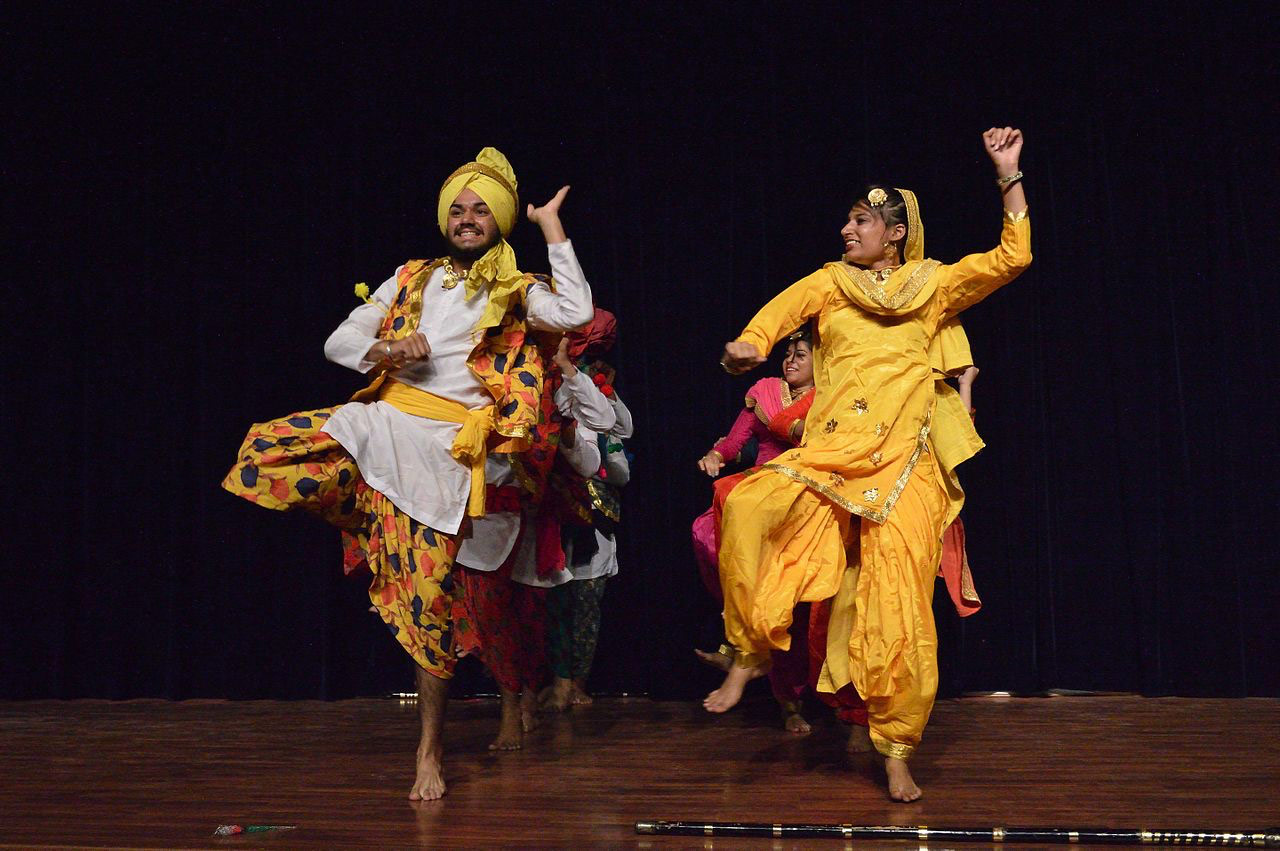
If you thought Bhangra was fantastic, Giddha will provide you with the same kind of experience. Giddha is a female-only specialty, similar to Bhangra. This dance is usually performed at important occasions such as weddings or festivals. ‘Viyagula Giddha’ is a type of Giddha that is done during weddings. The performers make a ring by standing in a circle. One woman sits in the ring’s centre, playing the Dhol. The finest part about the dance is that there are no strict restrictions that the dancers must follow. They dance to the beat of the music. The various stages in the lives of Punjabi women are depicted in Gidda.
Punjabi folk music has a lot of variety and is quite rhythmic. Dhoola and mahiya are prevalent forms in the western region, although the popular boli style is performed variably across the region. Punjabi music also includes vocals, as well as instruments such the dhol, tumbi, dhad sarangi, algoza, and Ektara. Punjabi folk idiom can provide insight into the lives and cultures of Punjabis. There is a large collection of music and songs commemorating birth, daily life, and death; songs of love and separation, dancing and joy; marriage, fulfilment, and disappointment. Punjab is separated culturally into three regions: Malwa, Majha, and Doaba. Today, Malwa embodies the authentic essence of Punjabi folklore.
The Punjabi fold idiom is incredibly rich, diverse, and adaptable. It is a wide culture of compassionate, big-hearted people who are free of fanaticism and restricted religious ideologies. The more we learn about the country’s folk music, the more difficult it gets to categories. However, one may be able to draw broad divides for each season, as each of the countless celebratory occasions that occur throughout the year has its own distinct music.
Punjabi Cuisine
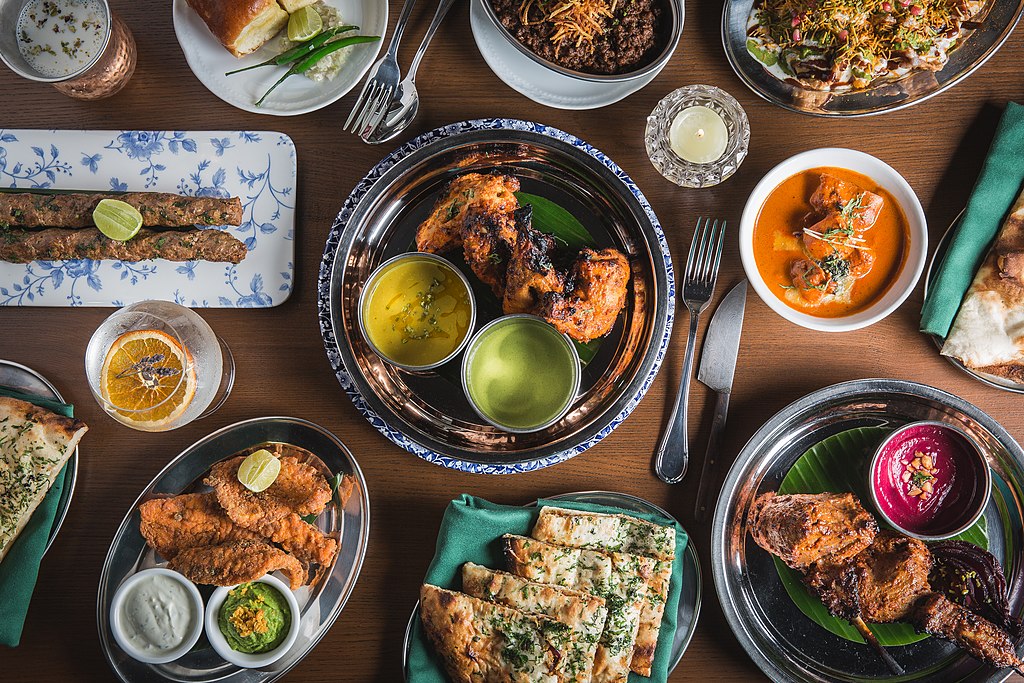
Punjabis are robust people with hearty appetites, and their food is simple, sizable quantities with no extraneous frills or exotic accompaniments, much like the Punjabis themselves. Punjabi tandoori cookery is widely regarded as one of the world’s most popular cuisines. Huge earthen ovens are half-buried in the ground and heated by a coal fire beneath them. This unique oven cooks marinated meat, chicken, fish, paneer, rotis, and naans of all varieties, and the results are incredibly delicious!
Some areas of Punjabi cuisine have been influenced by outside influences. The gravy component of Punjabi cuisine is said to have originated with the Mughals, according to food connoisseurs. Murgh makhani is the most well-known example. Because the state had a lot of pure ghee and butter, combining this impact in its food was a good idea. Murg makhani also helped to balance out the dryness of the tandoori chicken, which had been grilled over charcoal. Punjabi breads include nan and parathas, as well as maize flour rotis. Of course, the roti has evolved over time to include additional variation, such as the rumali roti, naan, and laccha parathas, all baked in the tandoor.
In Punjab, winter ushers in the season of makki ki roti (maize flour bread) and sarson ka saag (mustard leaf gravy). A portion of lassi (a sweet or salted drink prepared with curd) or fresh curd and white butter, which is consumed in big quantities, is required to complete any meal. Maa ki dal, rajma (kidney beans), and stuffed parathas are some of the other notable Punjab-only meals.
Tourism in Punjab
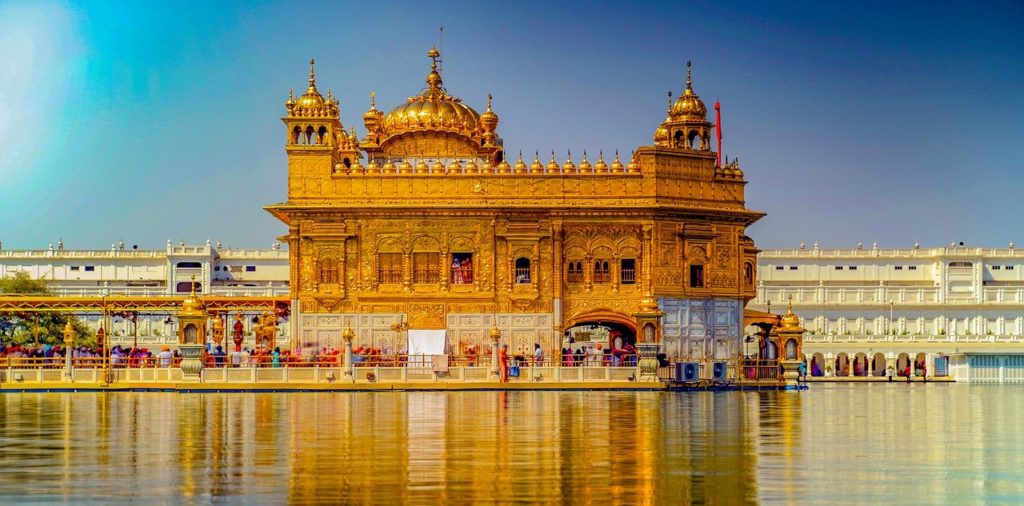
Punjab provides a traveller with a trip back in time. You’ll come across forts, palaces, and monuments, each one grander and more ornate than the last. When you visit Punjab, you will notice that the people’s generosity is as genuine as their cuisine. The Golden Temple, one of Punjab’s most renowned tourist destinations, teaches a lesson on universal brotherhood. Jallianwala Bagh, a major historical site, makes the eyes well up, along with palaces and museums that depict its previous splendour. Punjab offers culture, heritage, history, and wildlife as part of a tourist experience.
You’ll come across forts, palaces, and monuments, each one grander and more ornate than the last. Gobindgarh Fort, Rambagh Palace, Qila Mubarak, Old Moti Bagh, Maharaja Sher Singh Palace, and Bahadurgarh Fort are among the most popular forts and palaces in Punjab. There lies the Phillaur Fort, which is noted for its historical significance and functioned as Maharaja Ranjit Singh’s military base. The Qila Mubarak is another fort that warrants special attention. The relics of Guru Gobind Singh, the eleventh Sikh guru, can be found inside the fort. There is plenty of room for exploration with so many forts, palaces, and other ancient structures.
The Golden Temple, commonly known as the Darbar Sahib, offers another unique tourist experience. One of the most important Sikh pilgrimage places, it preaches and, more importantly, practices universal brotherhood, love, and harmony.
Occupations in Punjab
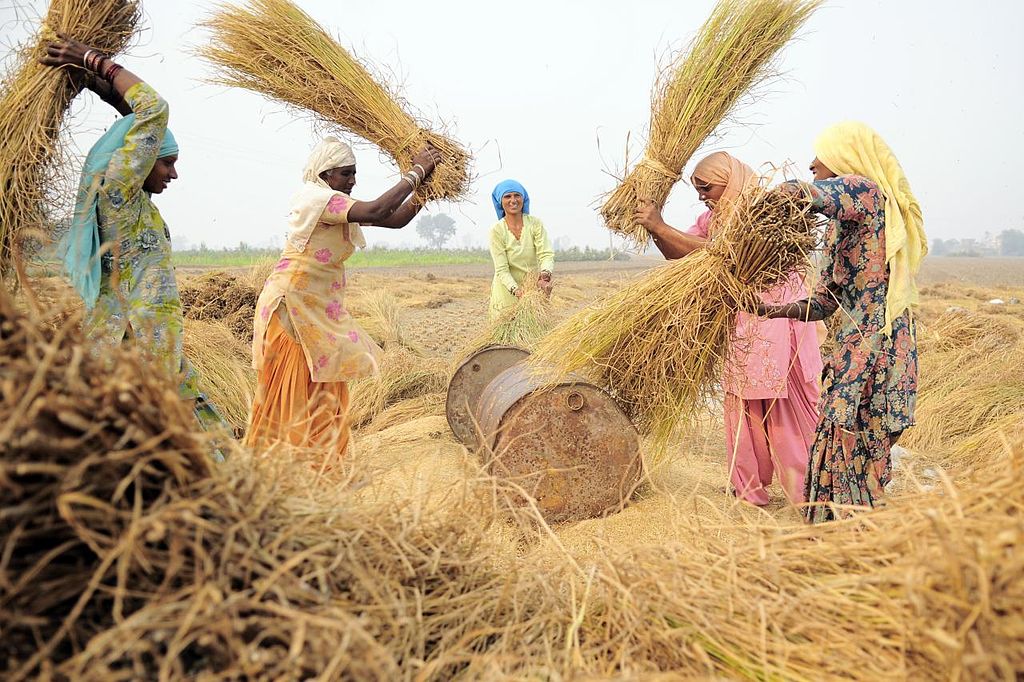
Due to numerous water sources and good quality soils, Punjab’s economy has been predominantly agriculture-based since the Green Revolution; the majority of the state is in a fertile alluvial plain with many rivers and a huge irrigation canal system. Wheat is the most widely grown crop. Rice, cotton, sugarcane, pearl millet, maize, barley, and fruit are among other major crops. Large amounts of livestock and fowl are also raised. Cotton, woolen, and silk textiles, metal products and machinery, food and beverages, and transportation equipment and parts are the industries with the most workers.
While the Punjabis are famed for their tenacity, their culture reflects a diverse range of historical civilizations. In Punjab, guests are treated as God’s representatives and are well looked after. Punjab is a place where artistry surrounds every area of life, and a sense of opulence pervades the atmosphere. Metalwork, needlework, wall paintings, jewellery, mud wall paintings, architecture, folk music, and dances all reflect the affluent culture of this northwestern Indian state. The state’s culture is diverse, containing a rich past as well as a thriving social scene. The Punjabi culture, which dates back over a century, is known for its tolerance, progressiveness, and logical attitude to life.





